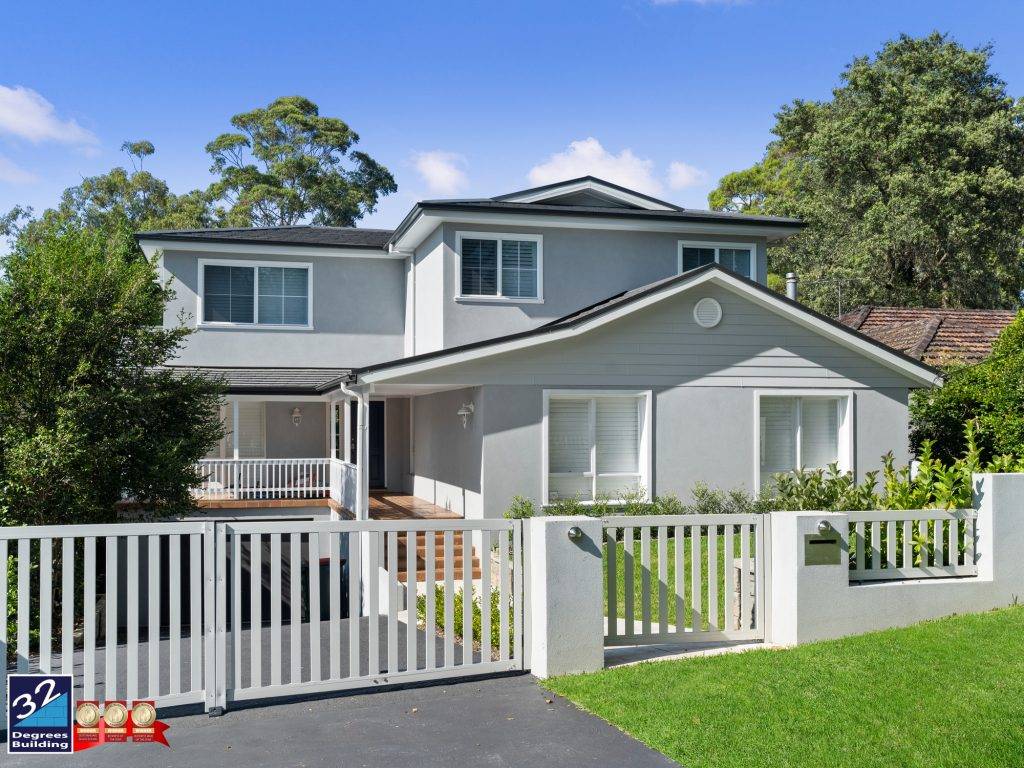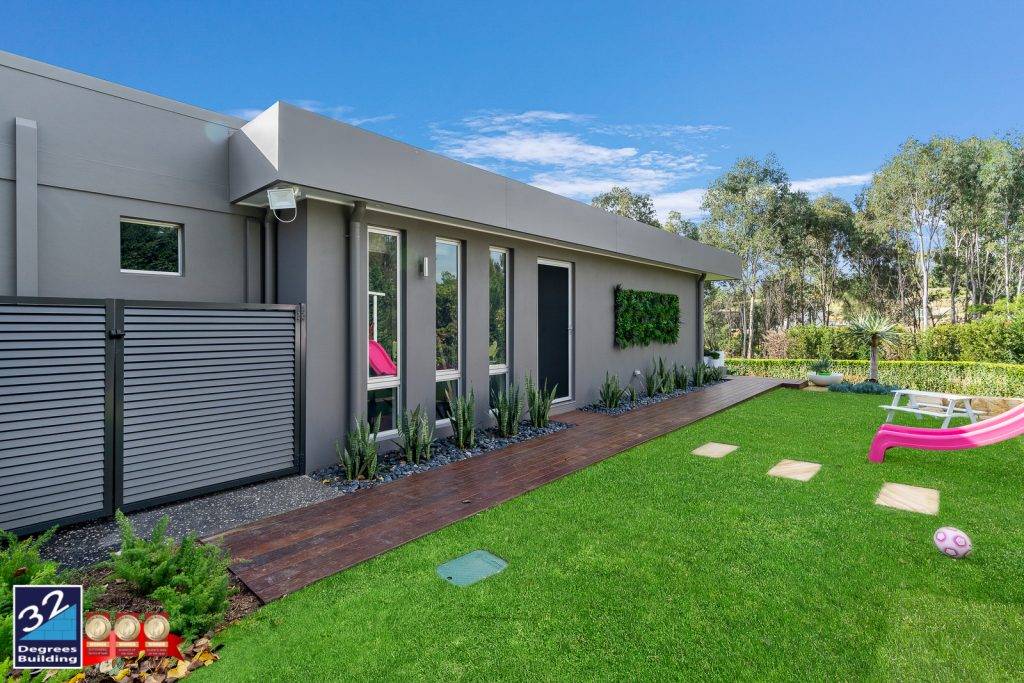Building Up or Extending Out: Cost-Effective Solutions
In this article, we’ll discuss the pros and cons of both second storey additions and ground floor extensions to help you determine which option is the most affordable for your unique situation. We’ll also touch on aspects such as the return on investment, disruption during construction, and the long-term benefits of each option to give you a comprehensive understanding of what to expect.
Second Storey Additions

Second storey additions involve building an additional level on top of your existing home. This type of extension is popular in urban and suburban areas where land space is limited. Here are some of the factors to consider when deciding if a second storey addition is the most cost-effective option for you.
Pros of Second Storey Additions
- Maximises Land Space: If you have a small backyard or limited land space, a second storey addition is an excellent way to add more living space without sacrificing outdoor areas. It allows you to retain garden space, which can be especially valuable if you enjoy outdoor entertaining or if children or pets need room to play.
- Less Disruption: Since the work is primarily done above the ground floor, second storey additions can be less disruptive to your daily life than ground floor extensions. You can continue living in your home during the construction process, which can save you the cost and inconvenience of temporary relocation.
- More Affordable than Moving: If you love your current location and don’t want to uproot your family, a second storey addition is a more cost-effective option than moving to a larger home. Moving involves expenses like real estate commissions, moving costs, and potential renovations in a new home, which you can avoid by extending your current property.
- Potential for Better Views: By extending upwards, you may be able to take advantage of better views that were previously blocked by other buildings or trees. The elevated position can also offer increased privacy, as it is harder for passersby to see into second-floor windows.
- Confidence in a Fixed Cost: Building a second storey addition on top of your existing home is a more cost effective solution and as there aren’t any unknown costs as there is no ground floor works (eg. soil removal/excavation unknowns) it gives you the confidence of knowing your build cost – is your build cost.
Cons of Second Storey Additions
- Structural Constraints: Building a second storey addition requires careful consideration of the structural integrity of your home. If your home was built on steel frames, then it may not support a second storey addition or, you may need to reinforce the existing structure, which can significantly add to the overall cost.
- Limited Floor Plan Options: When extending upwards, the floor plan of your new level will be restricted by the layout of the existing floor below. This can limit your design options.
- Potential for Disrupting Neighbours: If you live in close proximity to your neighbours, a second storey addition may cause disruptions and inconvenience to them, leading to potential complaints and delays. Construction noise, dust, and the presence of construction equipment can all affect neighbour relations.
- Height Restrictions and Permits: Depending on your local council or municipality, there may be height restrictions that limit how high you can build. Obtaining the necessary permits for a second storey addition can be more complex and time-consuming than for ground floor extensions.
Ground Floor Extensions

Ground floor extensions involve building outwards from your existing home. This type of extension is popular in suburban and rural areas, where land space is more readily available. Here are the pros and cons to consider when determining if a ground floor extension is the most cost-effective option for you.
Pros of Ground Floor Extensions
- Unlimited Floor Plan Options: With a ground floor extension, you have more flexibility with your floor plan since you’re not constrained by an existing structure. You can create an entirely new space that suits your needs and budget. This also allows for the addition of modern features such as open plan living areas, large windows, and bi-fold doors that open to the garden.
- Easier to Obtain Permits: In some areas, obtaining permits for a ground floor extension may be easier and less expensive than for a second storey addition. This can be due to fewer concerns about privacy and overshadowing of neighbouring properties.
- Better for Aging in Place: If you plan to live in your home as you age, a ground floor extension can provide you with a more accessible living space on one level. This is particularly beneficial for those with mobility issues or for those planning to age in place without the need for stairs.
Cons of Ground Floor Extensions
- More Disruption: Ground floor extensions can be more disruptive to your daily life since the work is being done at ground level. You may need to make alternate living arrangements during construction, which can add stress and additional costs.
- Less Yard Space: Since ground floor extensions take up more space on your property, you may have to sacrifice some outdoor areas or landscaping. This can impact your outdoor living space and may require a redesign of your garden or outdoor entertainment areas.
- More Costly: In general, ground floor extensions tend to be more expensive than second storey additions since they require more materials and labor. Foundation work can be particularly costly, especially if the ground conditions are challenging or if extensive excavation is required and some of the costs here can be unknown until construction has commenced.
- Zoning and Setback Requirements: Local zoning laws may dictate how close you can build to property lines, which can limit the size and shape of your ground floor extension. Setback requirements can significantly impact the design and feasibility of your project.
How to Determine the Most Cost-Effective Option for Your Home

When deciding whether to extend up or out, it’s essential to consider your specific circumstances and budget. Here are some factors to consider when determining the most cost-effective option for your home.
- Existing Structure: If your home is already structurally sound and can support a second storey addition, this may be the most cost-effective option. However, if you need to reinforce the existing structure, the cost of a ground floor extension may be more affordable.
- Local Building Regulations: Before deciding on a second storey addition or ground floor extension, it’s crucial to research local building regulations. Some areas may have restrictions on the height of the home or the percentage of the lot that can be built on. Compliance with these regulations can influence both the feasibility and the cost of your project.
- Size of Your Current Home: If you have a smaller home, you may get more value for your money by adding a second storey. However, if you have a larger home, a ground floor extension may be the more affordable option. The size and layout of your current home can also affect how easily it can be extended in either direction.
- Your Budget: Ultimately, your budget will play a significant role in determining whether a second storey addition or ground floor extension is the most cost-effective option for you. Consider the cost of materials, labor, and permits when making your decision. It’s also wise to include a contingency fund for unforeseen expenses that may arise during the construction process.
Other Factors to Consider
When deciding whether to extend up or out, there are some other factors to consider, besides cost. These include:
- Timeframe: If you need additional living space quickly, a ground floor extension may be the better option. Second storey additions tend to take longer to complete due to the complexity of building upwards and ensuring the existing structure can support the addition.
- Resale Value: While both second storey additions and ground floor extensions can add value to your home, it’s essential to consider which option will provide the most return on your investment. Think about the trends in your local real estate market and how future buyers might view the added space.
- Lifestyle Considerations: Your family’s lifestyle should also be a factor in the decision-making process. If you have young children or plan to grow your family, the layout and accessibility of the new space will be important. Likewise, if you entertain frequently, the flow between indoor and outdoor areas may influence your choice.
- Energy Efficiency: Extending your home provides an opportunity to improve its energy efficiency. Consider the orientation of the new addition, the potential for natural light and ventilation, and the type of insulation and windows you will use. These can all have long-term impacts on your energy costs and comfort levels.
Conclusion
When it comes to adding more living space to your home, there is no one-size-fits-all solution. The most cost-effective option for you will depend on your budget, the size and layout of your current home, and local building regulations. Consider all of these factors before making your decision, and consult with a professional builder or architect to help you determine the best option for your unique situation. With careful planning and consideration, you can successfully extend your home and create the extra space your family needs.
What comes first? Plans or Quote?
We often get asked: “What should I do first? Should I get a quote for my home extension/addition or should I get plans drawn up?”
These are our top 5 tips on why you should get a quote from a builder BEFORE getting plans for your project when building an addition or extension.
-
- Obtaining a detailed written quote or proposal for your addition or extension comes with many benefits. In your quote the builder should provide you with an indication of the size of the build (how much room is going to be added to your home), the number of rooms being added and what materials and inclusions are being used so you know what is included and if you can afford what you are planning to build.
- A builder can arrange to assist you in drafting plans inhouse or have relationships with draftspeople or architects that specialise in the type of build you are after. This can make the whole process smoother and faster saving you time and money.
- When you work with your builder they can review your plans with you and the draftsperson to ensure you are staying on track with costs and may pick up on items that may be of concern from a construction viewpoint. This input is important in ensuring that you achieve what you set out for in your build while staying within your budget and avoiding issues that could arise during the build if not picked up during this critical planning stage.
- A builder can help and advise you on the true costs for different material options before you commit to plans and approvals. This can in turn ensure that you get the right materials, resulting in the right look for your build at the right cost.
- A builder can consult and guide you with on how to achieve what you want while managing what you can afford. This is best done prior to plans being drawn up due to the builders expertise in the type of build you are looking at. This can reduce the amount of plan revisions and save you time and money in the short term and long term.
If you are thinking of planning or building an addition or extension contact us on (02) 4647 2324 or fill out the form below to get things started.
7 cost-effective ways to save on your second storey addition/extension
With financial institutions tightening their lending criteria, we have found that some of our clients are finding that although they would like the extra space in their home, their lending capacity has decreased.
A common question we continuously get asked is “What are the most cost-effective ways to achieve the additional space we require, while managing to stay within our budget?” Below are 7 of the most cost effective ways you can save on your build that we tend to suggest first ahead of looking to reduce the size of the structural aspect of the build.
- 1. Roofing – If you are looking to build a second storey addition/extension and your roof is currently tiled, why not consider reusing and recycling the existing roof tiles for your addition instead of installing all new roof tiles. Here you can reduce the cost of the supply of the roofing materials.
- 2. Cladding – Opt for the external cladding of your home to be a Weatherboard cladding. This choice will save you on material and labour costs compared to brickwork or a Hebel and Render which are costlier options. Check out the Weathertex cladding gallery
- 3. Ensuite – Is an ensuite a must have for the guest bedroom? How often do you have guests staying that will utilise this room? Could they just use the main bathroom? By eliminating this room, you can save significant costs on tiling, electrical, plumbing and fit out costs and the dreaded cleaning of an extra bathroom!
- 4. Kitchen – If you are considering an extension and you want to renovate your kitchen, you may need to consider what is the most important decision to make on your investment right now? Is it going to add value by increasing the footprint of the home and creating more living space? Can the kitchen wait until a later date when you are in a better financial position? Alternatively, if you are going to include the kitchen do you need the 40mm thick stone benchtop when you can save by choosing a 20mm? Do you need $1,000 tapware or are there more cost-effective alternatives?
- 5. Bathroom – The cost of tiles can have a significant impact on your build cost. There are a wide range of tiles at varying costs. Do you really need the $50/m2 white tile or will the $15/m2 tile work for you?
- 6. Internal doors – Solid doors or hollowcore doors? and do you really need to update all of them? Hollowcore doors are the cost-effective option here, you can always upgrade later if you want solid doors
- 7. Internal painting – Are you able to pick up a brush and complete this yourself? Saving on labour costs will reduce your overall build cost. Maybe have a bbq and invite the family over and ask friends to paint!
With making the decision to add to or extend on your home it is about balancing your needs and wants while staying within the budget you have available. Every family has a different approach to their wants and needs, and it is important to understand that if it is a challenge to stay within budget while getting what you want you may need to look at the alternative solutions offered to you and come to a compromise. We find that our clients that choose to increase the value of their home within a manageable budget are far happier and comfortable with the results and often build and work on other internal upgrades later.
Want advice and guidance on your future addition and the costs involved? Talk to us, the addition specialists – contact us today
